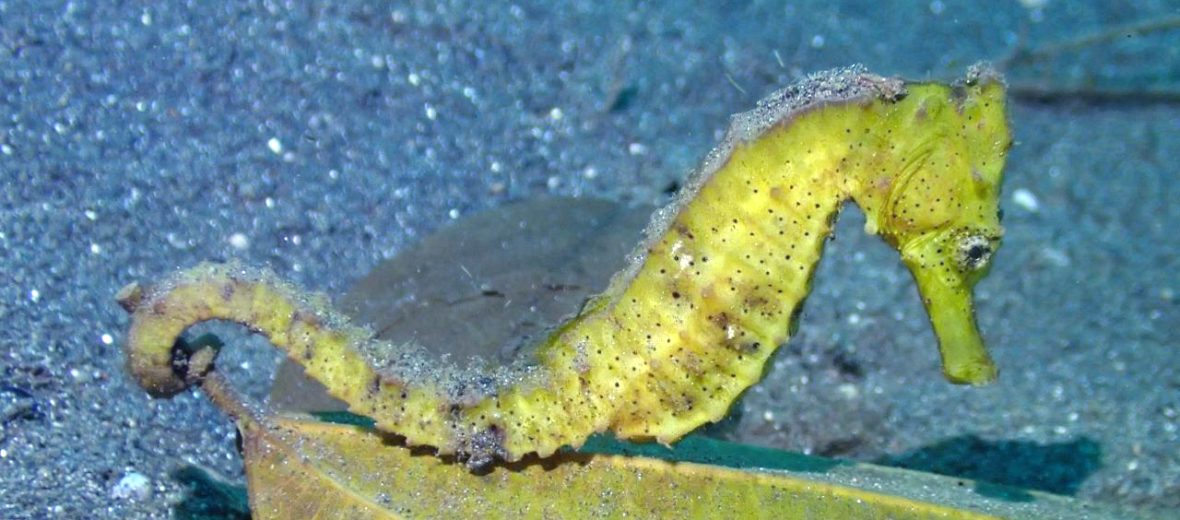
The spotted seahorse, aka common seahorse, yellow seahorse, or estuary seahorse, mostly inhabits the waters off the coasts of the China down to Australia. However, they can also be found in the Persian Gulf over to Southeast Asia, Japan, several Pacific islands like Hawaii, and they are also found along the eastern coast of Africa from Tanzania to South Africa. This includes the Indo-Pacific region which ranges from the northwest Indian Ocean to the central areas of the Pacific Ocean. Due to overfishing, over collection for the aquarium trade and for useless trinkets, and climate change, these intriguing creatures are listed as Vulnerable by the IUCN. Their numbers are also decreasing. The last evaluation of their status was in 2012.
First the Stats…
Scientific name: Hippocampus kuda
Weight: Up to 3+ ounces
Length: Up to 6.69 inches
Lifespan: Up to 4 years
Now on to the Facts!
1.) These seahorses prefer estuaries, harbors, lagoons, littoral zones, and coastal seagrass beds.
2.) They can be found at depths of up to 180+ feet.
3.) Via a method known as suction feeding, these seahorses, like other seahorses, prey on larval fishes and zooplankton.
4.) Spotted seahorses need to eat 4 – 5 times a day since they have no formal stomach, only an intestinal tract.
5.) Crabs, rays, sea turtles, and tuna all prey on these seahorses.
But wait, there’s more on the spotted seahorse!
6.) During courtship, the male will change his color patterns and seemingly dance around the female, while creating a clicking sound with the coronet (the crown-like structure on the top of their head). Eventually, the 2 intertwine their tails and the female will place her eggs into the male’s brood pouch by means of an ovipositor.
7.) The female deposits up to 1,000 eggs into the male’s brooding pouch.
Did you know…?
Countries like India, the Philippines, Thailand, and Vietnam are major importers of seahorses for medicinal purposes as used for traditional medicine. They are touted as curing a host of ailments. However, this has never been scientifically proven. So, sadly 25,000,000 seahorses are harvested each year for this purpose.
8.) The eggs hatch in up to 28 days, but this timeframe can alter based on the lunar cycles, monsoon patterns, and water temperatures.
9.) The male will go into labor during a full moon.
10.) The newly hatched seahorses measure only up to .28 inches long.
But wait, there’s still more on the spotted seahorse!
11.) Seahorses, in general, are poor swimmers, so they spend a majority of their time anchored to coral structures and/or sea plants.
12.) The spotted seahorse is a commonly kept fish in the aquarium hobby.
13.) Spotted seahorses are monogamous (mate for life).
Now a Short Spotted Seahorse Video!
This video talks about seahorses in general.
Be sure to share & comment below! Also, check out the Critter Science YouTube channel. Videos added regularly!
Want to suggest a critter for me to write about? Let me know here.
Some source material acquired from: Wikipedia & IUCN
Photo credit: Bali Wildlife



